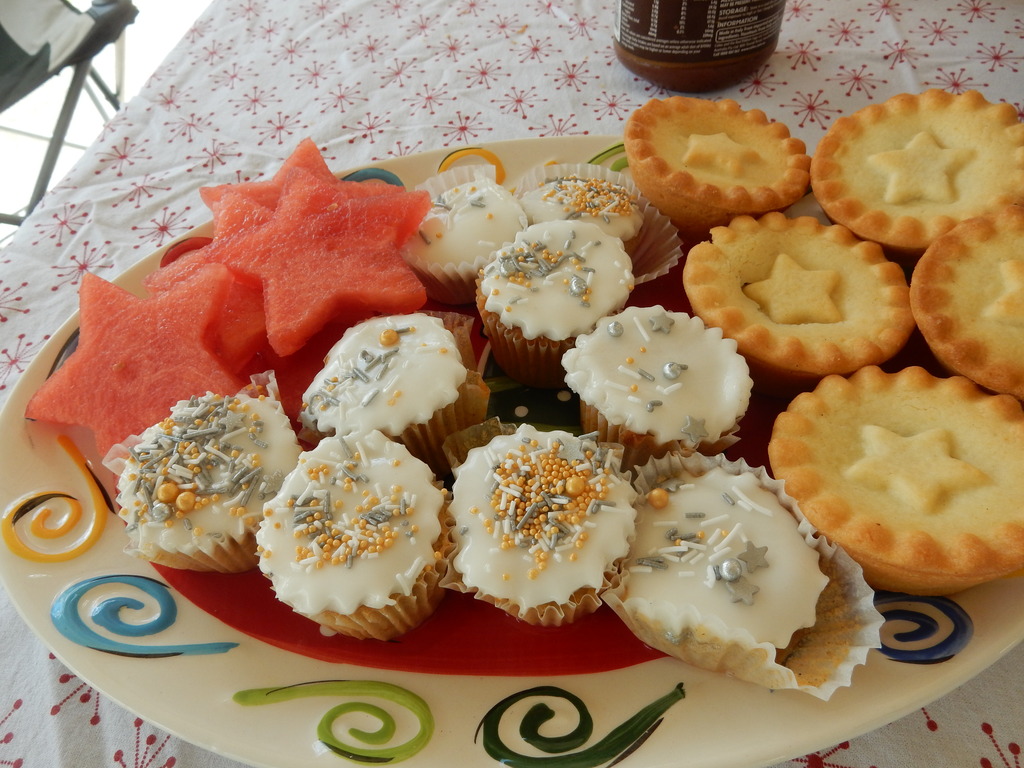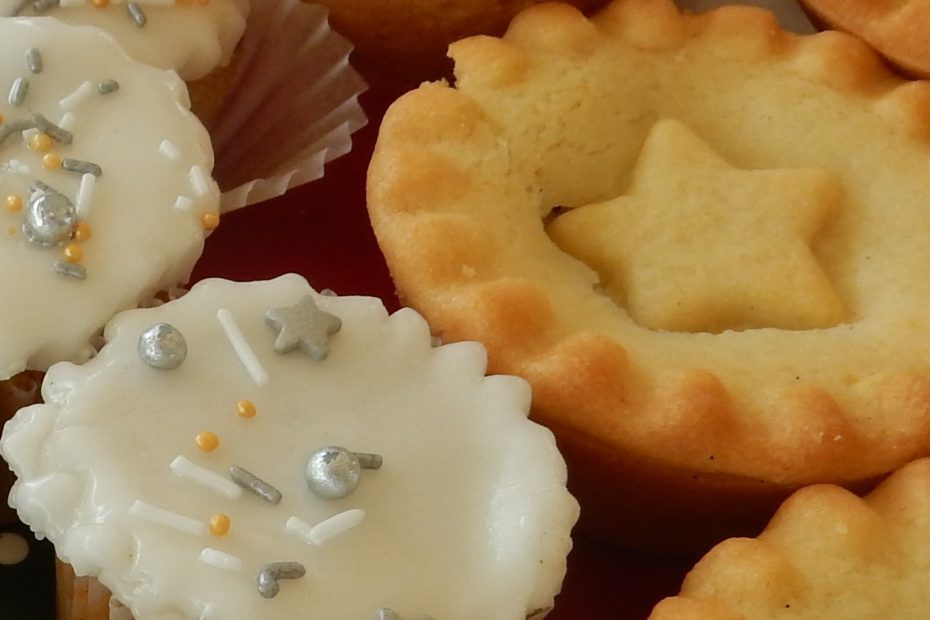Does Christmas sneak up on you as it does me? When I was grocery shopping the other day, I saw the first signs of the festive season’s approach: boxed fruit mince pies stacked on shelves in the supermarket.

Immediately, my taste buds were salivating at the thought of a mouthful of that tangy sweet and sour mix of apples, currants, mixed peel and orange. For me, fruit mince pies are like Hot Cross buns – once-a-year foods. I also make mini Christmas cup cakes using fruit mince at this time of year only (recipe courtesy of The Crabapple Bakery).
Evidence of the Christmas season in the grocery aisle also alerted me to the need to double-down on my wellbeing practices.
The Christmas season is not Hallmark greeting card wonderful for everybody. It can be fraught with stress, tensions, and disappointments. Some of us are more prone than others to feel this way.
Back in the early 2000s, University of California Riverside psychology professor Sonja Lyubomirsky used a pie chart to illustrate a theory explaining the underlying basis of happiness.
Lyubomirsky says three factors determine an individual’s happiness. Since we’re talking pies, let’s call them ‘ingredients’.
Ingredients for happiness pie
The first key ingredient is genetics—and we all have a ‘set’ point, a certain predetermined level of happiness or unhappiness.
This genetic component is not the only ingredient though.
The second ingredient Lyubomirsky calls life circumstances—gender, education, race, geographic location, income, health for example. Some, not all, of these are beyond our control.
The third ingredient is intentional activity – and we all have scope to change what we think and do.
In the original pie, the proportions were 50/10/40. Almost two decades on, positive psychology researchers, including Lyubomirsky, retain the three ingredients but are not as prescriptive about the proportions. Rather like some of the best chefs who plop, sprinkle, splash and dash this and that…
What remains evident however is that we have the power to boost our intentional activity and thereby our ‘happiness’. Laughter yoga is a staple ingredient for me.
What is laughter yoga?
Laughter yoga is a process that allows us to laugh even when we don’t feel like it. It’s an aerobic exercise program that can be done anywhere, at any time by anyone. Jokes are not involved.
What we learn through laughter yoga is not to take ourselves so seriously, to re-frame situations or thoughts, and to lighten our outlook. So, for example, if sitting at red lights gets you wound up in knots thinking you’ll be late for an appointment, laugh at the red light. I show you show in this video. Or if an unhelpful thought keeps playing on your mind, get out the mental floss. In the process, laughter yoga, I believe, deepens our senses of awe and gratitude.
Boosting intentional activity
Lyubomirsky makes these recommendations about intentional activity sought out to enhance your happiness pie:
- Do activities that feel natural, enjoyable and align with your values.
- Do activities that are meaningful and purposeful.
- Weave little actions throughout the day.
- Change practices up for variety, to keep your brain alive to possibilities.
Personally, laughter yoga ticks so many boxes: enjoyable, aligns with my values, has purpose, can be sprinkled throughout my day and is ever-changing.
If you would like to include laughing more as an ‘intentional activity’ to enhance your slice of happiness pie, join me and other laughter yoga practitioners who deliver laughter club sessions in person or online, every day. If you’d like to understand more about the positive practice of laughter yoga, check out my training page for workshop options.
Bon appetite!
(c) 2021 Heather Joy Campbell
Former medical journalist Heather Joy Campbell is an Australian professional laughter wellbeing facilitator, using the platform of laughter yoga as well as evidence-based science of happiness practices.
